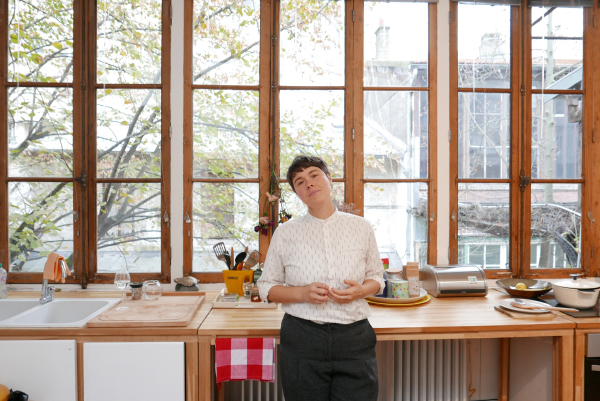Ingela Ihrman / Pernod Ricard Fellowship 2019

Ingela Ihrman, born in 1985, is an artist based in Malmö. She studied at Konstfack, Stockholm and graduated with an MFA in 2012. Her practice moves freely between performance art, installations, and writing. Costumes and staged situations are reoccurring elements in her presentations, bringing creatures into life while giving birth or blooming. Her work is characterized by tactile craft techniques and poetic absurdism, and borrows from amateur theatre, as well as from science. Limiting norms, notions like loneliness and belonging, and relations between different life forms are discussed within her work. Ihrman’s recent solo exhibitions include Varm saft, Kristianstads konsthall (2018), The Inner Ocean, der TANK, Institut Kunst, FHNW Academy of Art and Design, Basel (2017), and Future Flourish at Tensta konsthall, Stockholm (2016). She participated in Omnejd, Lunds konsthall (2018), Metemorphoses - let everything happen to you, Castello di Rivoli, Turin (2018), the 11th Gwangju Biennale, The Eighth Climate (What does art do?) (2016); The Swamp Biennal, Art Lab Gnesta (2016); Survival K(n)it 7, Latvian Centre for Contemporary Art, Riga (2015) among others. Ihrman made set design and costume for IMMUNSYSTEMET, a dance performance by Rosalind Goldberg, Sandra Lolax and Stina Nyberg (2017). She is currently working on a theatre play with director Maja Salomonsson that will premiere at Ögonblicksteatern in Umeå, autumn 2018.
Ihrman’s project for the Pernord Ricard’s Fellowship will depart from the artist’s relationship with her stomach. During her research, the artist aims to expand her knowledge of metabolism, bacterial flora, and the so-called “bowel brain” (the nervous system of the intestines). She is particularly interested in the Swedish term “orolig mage” (stomach with agony), which refers to both a worrying mind and upset intestines. For her project, the green algae Ulva intestinalis will function as a link between the intestinal flora and the flora of the sea – a slippery path back into the water, where the algae hold the ability to bind the sun’s energy. Over time, the sunlight converted by the plant metamorphoses into fossil fuels. One of the aims of Ihrman’s project is to see if the reserves of energy in the stomach can be as highly valued as the layers of crude oil in the interior of the earth. The artist desires to put nature and anatomy in conversation, exploring the idea of time, light, and algae playing part in forming the soft fat of the stomach, as well as fossil fuels. The artist intends to work with marine biologists, permaculture specialists, as well as with traditional and alternative medical scientists.
Partager